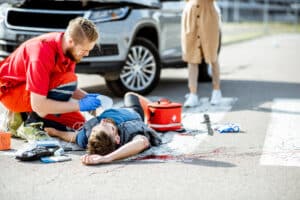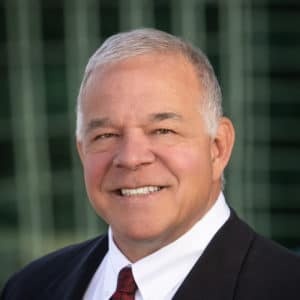The rising incidents of pedestrian accidents across the globe have sparked a critical conversation about the risk of injury and fatality to victims. A vast number of people suffer the effects of traffic accidents every year, and many of these victims are pedestrians. As a pedestrian accident victim, you must pinpoint the causes of your accident to pursue justice and compensation from the parties responsible.

Following a pedestrian accident, a victim can face enormous adverse effects on their life and future. These consequences include physical injuries—such as minor, severe, and potentially life-changing conditions—and psychological issues. Such incidents can also cause significant financial strain due to medical bills, rehabilitation costs, and loss of income if the victim cannot return to work.
The combination of these elements can result in a much lower quality of life post-accident for a victim.
You have a right to determine the cause of the accident and seek compensation from the parties responsible. A pedestrian accident lawyer in Phoenix can protect your rights and set the path to fight for them in the aftermath of an accident causing you injuries and damages.
Statistics on Pedestrian Accidents in the United States
Pedestrian accidents are more common than one would imagine, and the statistics paint a grim picture. Understanding the extent of these accidents and their implications, their dangers, and the vulnerable population most at risk of experiencing them can serve to identify the cause of an accident and who is responsible.
According to national statistics from the National Highway Traffic Safety Administration, more than 7,300 pedestrians die in traffic accidents yearly in the United States. This figure is alarmingly high and reflects the danger of negligent drivers on roadways across the country.
Older people, children, and those in urban areas are more susceptible to becoming involved in pedestrian accidents.
In terms of injury and fatality statistics related to U.S. pedestrian accidents, the outcomes are overwhelmingly disastrous. When a vehicle strikes a pedestrian, the pedestrian does not have the same protection as a person inside a car. The resulting injuries are often severe and frequently lead to fatalities.
Common Causes of Pedestrian Accidents
Pedestrian accidents can occur for several reasons, but certain factors are more likely to contribute to them than others. Examining these common causes can serve as a starting point in your claim or case as your attorney works to identify the culprit of the accident and what factors may have played a part in the events leading up to the crash and your injuries.
Driver Negligence
Negligence: Driver lack of care or inattentiveness causes more pedestrian accidents than anything else. Drivers who fail to uphold the duty of care required as they operate their vehicles endanger others. Negligent motorists often cause pedestrian accidents.
Figuring out a driver's actions in the moments immediately preceding a collision with a pedestrian can identify the cause of a crash.
- Speeding: A vehicle moving at high speeds has less time to react to obstacles, including pedestrians. Higher speeds also increase the chances of a severe or fatal injury in case of a collision. Of particular concern are drivers who fail to slow down in school zones during the designated hours. These areas have reduced speed limits to offer protection to children at times when they are more likely to be crossing the road. Not respecting these lower posted speed limits increases the risk of pedestrian accidents involving children.
- Distracted driving: Drivers dividing their attention between their phones or other distractions and the road can easily miss pedestrians crossing or walking on the side of the road. Eating or drinking while driving and adjusting the radio or GPS can also take a driver's focus off the road. All it takes is a moment of inattentiveness for a driver to cause a serious accident that leads to a severe injury or fatality.
- Drunk driving: Inebriated drivers have impaired judgment and slower reaction times, making them more likely to hit pedestrians. A driver under the influence of drugs or alcohol has a higher likelihood of causing a crash. Nighttime hours are perilous because the effects of drugs or alcohol with limited visibility can have disastrous consequences.
- Failure to yield to pedestrians at crosswalks: Intersections are common locations of pedestrian accidents. Legally, drivers need to give the right of way to pedestrians at designated crosswalks. Many collisions occur because of a motorist's ignorance or disregard for the law to yield.
- Breaking traffic laws: Law violations such as running red lights or stop signs can lead to unexpected collisions with pedestrians. Pedestrians rely on motorists to follow the law when preparing to cross a path or crosswalk; if a driver fails to follow the posted signs and traffic lights, a collision with the pedestrian can occur, leading to injury or loss of life.
- Reckless driving: Reckless driving, which includes aggressive driving, tailgating, changing lanes without signaling, and other dangerous driving, can create unpredictable situations that put pedestrians at risk. Pedestrians may be unable to anticipate or react to a driver's hasty actions, leading to collisions.
- Failure to adapt to weather conditions: Adverse weather conditions can limit visibility and increase the chance of accidents. It is a driver's responsibility to adapt their driving and slow down when they encounter bad weather. Snow, ice, and rain can result in slippery roads. If a driver does not react and adapt to the change in weather, they may lose control of their vehicle and strike a pedestrian on or near the roadway.
Environmental Factors
Factors within the environment can also play a significant role in pedestrian accidents. Although driver negligence often causes crashes with pedestrians, specific characteristics in the area around an accident's location may have contributed to the accident.
You can hold another party liable if they should have fixed avoidable hazards that caused your pedestrian accident.
- Poorly lit streets: Insufficient lighting can make it hard for drivers to spot pedestrians, especially at night. Municipalities can play a role in mitigating this risk by installing adequate street lighting, specifically in high-pedestrian traffic zones or known accident-prone areas.
- Lack of pedestrian crosswalks: Without designated places to cross, pedestrians must share the road with vehicles, increasing the chance of an accident. In some situations, city planning or residential layout may contribute to this. Areas without pedestrian crosswalks at regular intervals or high-traffic areas without pedestrian bridges or tunnels can force pedestrians to cross at dangerous points.
- Poorly maintained sidewalks and roads: Uneven or damaged walking surfaces can lead to trip and fall accidents, pushing pedestrians onto the road right into the path of vehicles. Poor maintenance of sidewalks may also cause obstructions, such as waste bins, fallen branches, or debris, which can force pedestrians to walk on the road. Lack of proper investment in the maintenance and repair of resources meant for pedestrian use can inadvertently put pedestrians at risk, as they have no other choice but to share the path with vehicles. This drastically increases their chances of a devastating traffic accident.
- Inadequate signage or traffic controls: The absence of proper signage or traffic control mechanisms often contributes to accidents. Lack of clear signs indicating pedestrian crossings, low visibility of stop signs, malfunctioning traffic lights, or missing speed limit signs can confuse drivers and pedestrians, leading to potentially dangerous situations.
The Aftermath of Pedestrian Accidents
The effects of an accident on a pedestrian victim often resonate far beyond the immediate incident. Whether devastating injuries, psychological trauma, or overwhelming financial burdens, the aftermath of such an event can upend a life irrevocably.
Common injuries sustained in pedestrian accidents include minor scrapes and bruises, severe damage—such as fractures, spinal cord injuries, and traumatic brain injuries—and even fatalities. Recovery can involve long-term medical care, physiotherapy, and rehabilitation. Many victims face a lifelong disability, drastically limiting their quality of life.
Beyond the physical toll of their injuries, pedestrian accident victims can suffer severe psychological trauma. Victims often develop post-traumatic stress disorder, anxiety, depression, and emotional distress, which can impede recovery and reintegration into society following an accident.
The economic costs of pedestrian accidents can mount quickly, placing victims under significant financial strain. Expenses such as medical bills, rehabilitation costs, and loss of income due to time off work or permanent disability can have substantial repercussions on a victim's financial stability. This financial burden, combined with the victim's injuries and trauma, can derail a victim's life for some time after the accident. In some cases, the effects stretch throughout their lifetime.
The Rights of Pedestrian Accident Victims
A pedestrian accident victim has the legal right to seek compensation from the at-fault party after an accident that occurs because of negligence. These rights allow victims to recover the economic damages they have sustained as a result of their injuries and non-economic damages for pain, suffering, and emotional distress.
Motorist negligence often causes accidents with pedestrians. To claim compensation, victims must establish that the driver owed them a duty of care, that the driver breached this duty, and that this breach led to their injuries.
Proving Negligence of a Motorist in a Pedestrian Accident
Demonstrating a driver's negligence involves a few key factors. You must initially prove that the driver had a duty to act with reasonable care while behind the wheel. This is typically straightforward because all motorists have this responsibility when they drive.
You must then show that the driver breached this duty. This could be through various actions, such as speeding, distracted driving, drunk driving, failure to yield to pedestrians, breaking traffic laws, reckless driving, or failing to adapt to adverse weather conditions. Evidence of these actions can come from police reports, eyewitness testimonies, or potentially footage from traffic cameras or other surveillance.
It is essential to prove that the driver's breach of duty directly caused your injuries. Medical documentation and expert testimony can be pivotal. A doctor, for instance, could testify that your injuries are consistent with the force from a vehicle.
Establishing these factors can be complex, so hiring a pedestrian accident lawyer can hugely benefit your case. A lawyer knows the best methods for gathering and presenting the necessary evidence to prove negligence in your situation.
How an Attorney Can Fight for Your Rights After a Pedestrian Crash

Hiring a lawyer is a necessary step for a pedestrian accident victim, as they can prove invaluable and assist you in many ways. They can gather and compile evidence to support your claim through photographs, witness testimonials, police reports, or medical documentation.
They can guide you through the legal process, ensuring you understand each step, and advise you on the best course of action in your case. They can also negotiate with the at-fault party's insurance company to seek fair compensation for your injuries and damages. If negotiations are unsuccessful and your case goes to trial, they can represent you in court. With their experience and background, they can fight for your rights and advocate for your best interests, giving you the peace of mind to focus on your recovery.
Understanding the common causes of pedestrian accidents is key to their prevention and will play a significant role in making our roads safer for pedestrians. Seeking legal recourse if you have been a pedestrian accident victim is crucial to protecting your rights and accessing the compensation you need to recover.